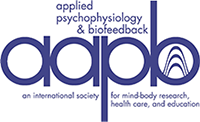Neurofeedback Treatment in a Client with ADHD and ODD
A case study on neurofeedback and cognitive behavior therapy (CBT) of an 11-year-old girl diagnosed with Attention Deficit Hyperactivity Disorder (ADHD) and oppositional defiant disorder (ODD) is presented. The quantitative electroencephalograms (QEEG) demonstrated a low-voltage electroencephalograms (EEG) with excess relative theta. After 31 sessions of theta/beta neurofeedback treatment, the client no longer met criteria for both ADHD and ODD. Her inattentive problems and hyperactive and impulsive behavior declined to normal levels, further evidenced by neuropsychological and event related potentials (ERP) improvements. Also oppositional and aggressive behavior improved dramatically. This case study demonstrates the possibility to treat clients with ADHD and comorbid disorders with combined neurofeedback and CBT. However, further controlled studies are required to replicate and extend these findings and investigate which effects are related to neurofeedback and which to CBT.

The pretreatment EEG in single Hertz bins during eyes open. Note the low-voltage nature of the EEG specifically for alpha and beta, and the slight theta excess and frontocentral sites at 6 and 7 Hz.

This figure demonstrates the relative power Z-scores for the different frequency bands. These data clearly demonstrate the excess theta, most specifically in the Theta 2 (5–7.5 Hz) band.

Self report questionnaire for ADHD symptoms across sessions.

Pittsburgh Sleep Quality Index (PSQI) for client across sessions. Note the stabilization of improvement after 20 sessions, and as can be seen from Figure 3, the biggest gain in inattention took place after 20 sessions.

(a) Relative power Z scores Eyes Open, pretreatment. (b) Relative power Z scores Eyes Open, posttreatment.

This figure shows the auditory event related potential at Pz for pretreatment (left) and posttreatment (right). Note the increased P300 amplitude posttreatment relative to normal, which is indicated by the black line.

Z-scored performance data for pre- and posttreatment on the Continuous Performance Test (sustained attention) and the Go-NoGo test (inhibition).



Contributor Notes
